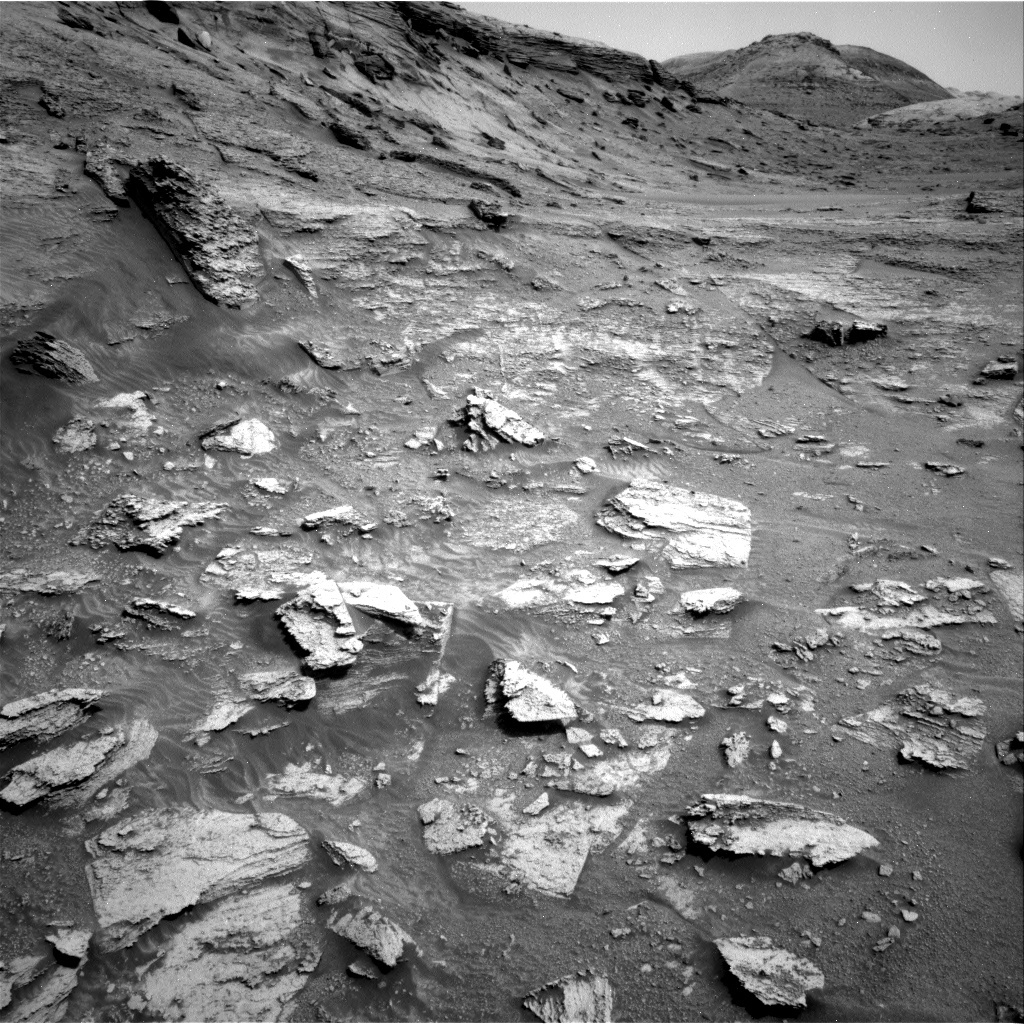2 min read

It’s been a challenging week in Gale crater, but Curiosity and the rover team are ready to put those challenges behind us as we head into a busy weekend plan. I’ve been on shift as LTP and SOWG Chair this week, and we’ve had a handful of issues related to difficult terrain, being in a good orientation for communication, and having small downlink volumes available for planning. Today was a “late slide sol” because the downlinked data that we needed for planning didn’t arrive on Earth until around 9:30am PDT this morning. Despite these challenges and the late start, we put together a very full weekend plan for Curiosity to carryout over the next three days.
The plan starts with a ChemCam observation on the bedrock target “Canaima” and multiple Mastcam mosaics to document the local stratigraphy and fractures. Then we’ll use MAHLI and APXS to investigate a couple of blocks of bedrock in our workspace, including a MAHLI “dogs eye” mosaic to examine the exposed stratification at the target “Kurupukari.” Overnight, APXS will collect data on “Oshi” and “Bonfim.” On the second sol, Curiosity will collect another ChemCam observation on the target “Oshi,” followed by a ~14 m drive to the south. The topography looks a bit challenging, so here’s hoping that Curiosity can channel her sport mode to get up and over the terrain seen in the above Navcam image. After the drive we’ll collect images to help with targeting on Monday. The third sol includes an autonomously selected ChemCam target, and Navcam observations to search for dust devils and monitor dust and clouds in the atmosphere. Early the next morning there’s an additional science block for environmental monitoring.
It’s nice to get back into some new terrain and the views are fantastic. Looking forward to the results from all of these activities, and hoping for easier planning in the week ahead!
Written by Lauren Edgar, Planetary Geologist at USGS Astrogeology Science Center







